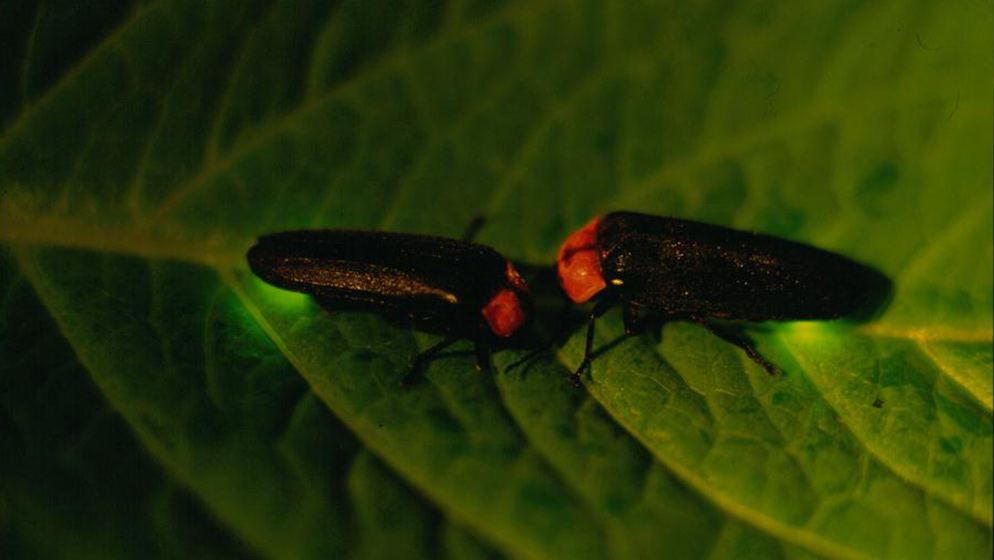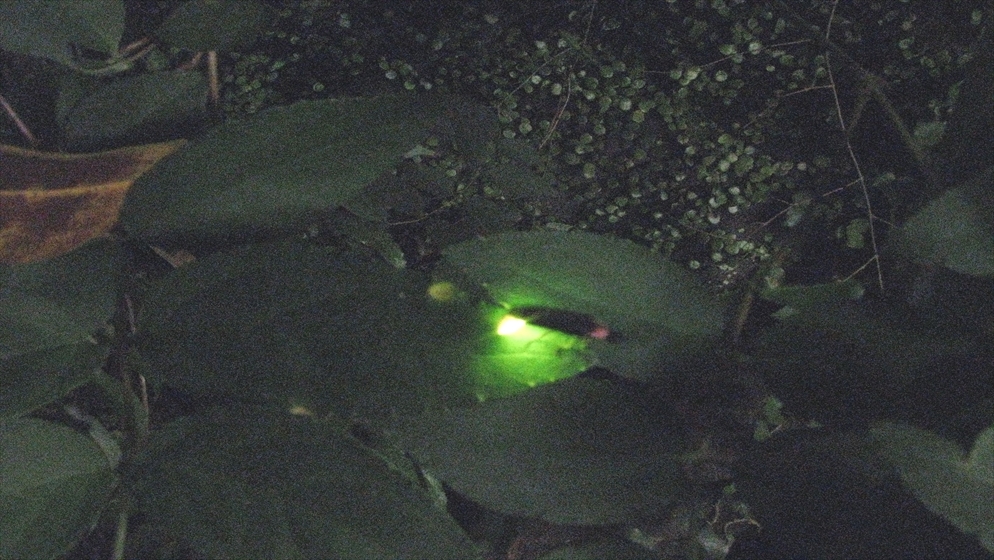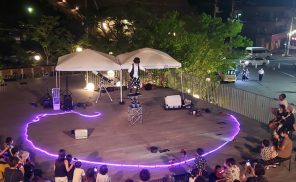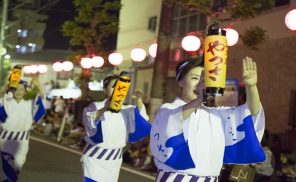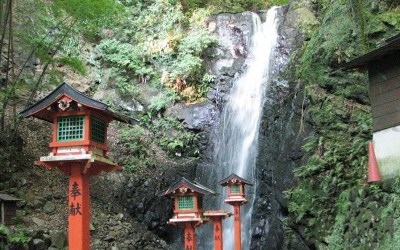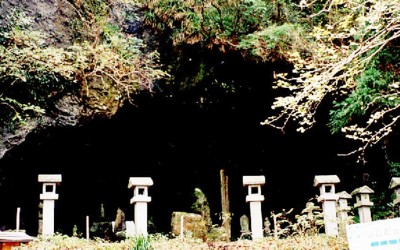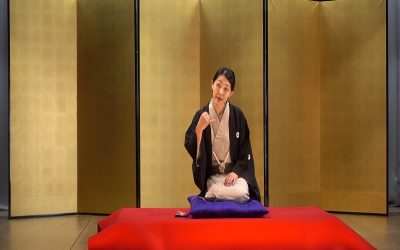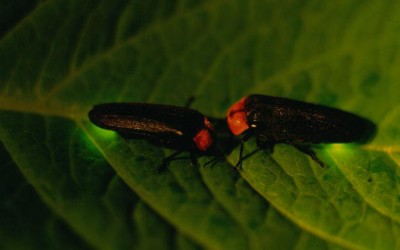The Firefly Party
This early-summer event is unique to Yugawara, with its crystalline waters. As the shades of night fall, Genji fireflies (Luciola cruciata) glow near the waters’ edge in Manyo Park.
The fireflies of Manyo Park are first raised in a “firefly cabin” in the park until they grow into larvae, and are then released into the wild by students from Yugawara Elementary School in mid-March. The fireflies that are seen later are those that were born naturally afterwards.
In addition, fireflies naturally inhabit the areas along the Fujiki, Chitose, and Niizaki rivers in Yugawara, and during the firefly season their mysterious light can be seen. Make sure not to miss the chance to experience this magical time, when fireflies in the darkness-shrouded trees and tall grasses create an enchanting, otherworldly atmosphere.
Manyo Park has no entrance restrictions throughout the year. After the event hours have passed, normal park and road lights are turned on for safety. Due to the whole park becoming more bright, this may make it difficult to view fireflies. As well, after the event hours each evening, there will be no staff in attendance, so please be very careful about your safety in the park.
| Event period | March 31th (thu.) –June 9th (Sun.), 2024 |
|---|---|
| Hours | 7:30 p.m. – 9:00 p.m. |
| Venue | Hotaru-terrace (inside Manyo Park) |
| Admission | Free |
| Inquiries | Yugawara Onsen Tourism Association Phone: 0465-64-1234 |
About appreciating fireflies in Kaboku-En in Manyo Park
① During the Firefly Party at Kaboku-En, in Manyo Park, it is very dark with only the footlights turned on, in order to allow for easier viewing of the light of the fireflies. Please watch your step.
② Please refrain from bringing your pets to the firefly viewing area in Manyo Park’s Kaboku-En, or other areas where fireflies are.
③ Please note that there will be no staff in attendance after 9:00 p.m., even though entrance to the park is still permitted. Be careful, however, as the lights along the road to the event venue are turned off at 11:00 p.m.
Access the entrance to Manyo Park from the square in front of the Genkan Terrace. The walk to the event venue takes about five minutes. There is a long flight of stairs. Keep walking after passing Rifuku Shrine, where you will find the place for hanging ema (votive picture tablets) on your right.
Please take your time, and have fun meeting the fireflies in hotaru-terrace!
Please practice good manners while appreciating the fireflies.
① Camera flashes are prohibited where fireflies can be seen!
It is difficult even for professional photographers to take photos of fireflies, and nearly impossible to take good pictures with ordinary cameras. Moreover, the flare of camera flashes in the dark can be blinding for you and others.
② Bright light can have a negative effect on fireflies.
Light has such a strong impact on fireflies that even the light of a full moon hampers their light-emitting activities. Fireflies communicate through their light, to other fireflies and members of the opposite sex, so they prefer darkness to enhance their light signals in. Camera flashes and other sources of artificial light can confuse them and inhibit their natural behavior.
Please be respectful to nature and other people attending the event, and help conserve the beautiful environment where fireflies can live and be raised safely. Your kind cooperation is appreciated.
Firefly Q & A
When is the best season to see fireflies?
The season varies from place to place, but in Yugawara fireflies are most numerous from late May through late June. As well, since they are natural, wild creatures, their numbers and activity are greatly influenced by factors like the yearly climate trends and the current weather.
After fireflies have begun to appear, we take a variety of aspects into consideration and then make a rough estimation of when their numbers will reach their peak. Given the effects of weather and such, it is rather difficult to make a precise prediction, and it should not be assumed to be 100% accurate. However, any information regarding the status of the fireflies will be posted on this page, so please check before visiting the venue!
On what kinds of days can the most fireflies be seen?
Fireflies are most active on warm, cloudy, still nights, which are their most favorable conditions. Even more fireflies can be seen on dark nights without moonlight. However, on rainy, windy, or chilly evenings, they hide from the wind and rain on the backs of leaves or in bushes, so they cannot be seen much. Naturally, they are most active in the evening, when their light communication is most effective, but the actual time span of their activity is quite limited. Many fireflies begin to come out right after sunset, with the first peak usually happening around 9:00 p.m. The second peak comes around 12:00 a.m., and the third around 3:00 a.m. Of the three peaks, they are most numerous and active for the longest period of time at the first peak. After these peaks have finished, each firefly goes to sleep in the grass or trees.
Why do fireflies flash?
Males emit light to find mating partners, and females respond in kind. Patterns and brightness of flashes help fireflies to identify members of their own species, and of the opposite sex. These light flashes also help ward off predators, who avoid fireflies due to toxins in their bodies that are both foul-tasting and poisonous. A chemical called “luciferin,” and a bio-luminescent enzyme called “luciferase” are present in their bodies. These, along with oxygen and other factors, result in a chemical reaction that creates light, and they control their flickering with the presence or absence of oxygen.
How many kinds of fireflies are there?
Only Genji fireflies (Luciola cruciata) can be seen in Yugawara, but there are over 2,000 different species of fireflies worldwide. About 45 species have been found in Japan.
Among these, “Genji fireflies” and “Heike fireflies” (Aquatica lateralis) are considered to be very rare in the world, because they spend their larval stage in the water. Most other species live on land almost their entire lives.
Access info for the Firefly Party
| By bus from JR Yugawara Station | Take the bus for Oku-Yugawara/Fudodaki, and get off at Ochiai-bashi Bus Stop (about a 10-minute ride). ※Buses for Oku-Yugawara/Fudodaki depart every 10 to 15 minutes. ※Buses for Yugawara Station depart every 15 to 20 minutes, until the last bus leaves Ochiai-bashi Bus Stop at 8:53 pm |
|---|---|
| By taxi from JR Yugawara Station | About a 7-minute ride from Yugawara Station. |

